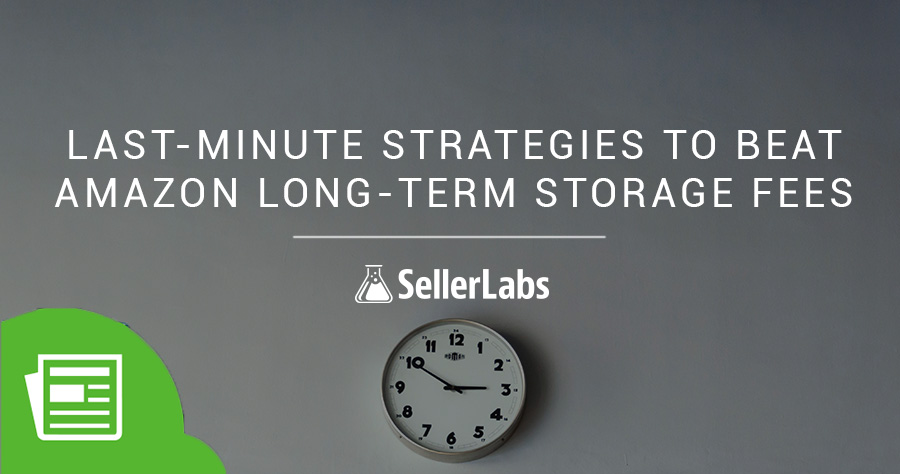Amazon Subscribe & Save and Other Inventory Tips

You may have heard of Subscribe and Save, one of Amazon’s special discount programs for FBA sellers. There’s also FBA Small and Light and Frustration Free Packaging, which are great options for sellers in categories with small products, such as Electronics or Personal Care.
What is Amazon Subscribe and Save?
Amazon Subscribe and Save is a special program that allows shoppers to receive discounts on the products that they get delivered regularly.
These programs incentivize moving inventory out of Amazon’s warehouses quickly and efficiently. Moving inventory is just as good for you as it is for Amazon, but what if your product isn’t eligible for these special discount programs?
If your product doesn’t qualify for Small and Light or FFP, there are plenty of other inventory management solutions for you. If you sell in a category with frequent repeat buyers (think Health, Household, or Pet), Amazon Subscribe and Save is the first thing to consider.
CHAPTER I Benefits of Amazon Subscribe and Save
Subscribe and Save is a win/win scenario: customers get better prices on scheduled deliveries, while sellers get loyal customers and guaranteed conversions. Subscribe and Save doesn’t take long to set up, and all the instructions are clearly explained in Seller Central. However, if you’re still on the fence about whether Subscribe and Save is worth it to your business, consider these key benefits.
Consistent Sales
In order to sell better on Amazon, you have to make sales on Amazon. It’s a Catch-22, but Amazon conversions power the A9 algorithm that ranks your product in search. You’ll get nowhere without your first sale, and Amazon Subscribe and Save provides you with the loyal customer base you’ll need to jumpstart your business.
Predictable Inventory Management
Inventory management should always be a priority, but in 2021, it should be top of mind. Although Amazon logistics have (mostly) returned to normal since March 2020, most sellers are understandably weary of sending too much inventory to external fulfillment centers.
If you decide to use FBA, you’ll want to be in control of your inventory. Subscribe and Save offers you more predictability about how many units you’ll need to move in a given month.
CHAPTER II Alternative Inventory Management Tips
Amazon Subscribe and Save won’t be a perfect solution for every seller. Regardless, you should still take control of your inventory management to make more sales at a lower cost. Try these pro tips for more cost-savings on fulfillment.
Avoid Long-Term Storage Fees
As an FBA seller, it is in your best interest to get your excess inventory out of Amazon’s warehouses. FBA has fulfillment centers, not storage warehouses. You’ve got to move that inventory, or you’ll be fined for it! Try some of our Last-Minute Strategies to Beat Amazon Long-Term Storage Fees. Hopefully, you’re able to put some of those tips to work to avoid LTSFs.
Take Advantage of Free Inventory Removals
Usually around the time they assess Long Term Storage Fees, Amazon runs a promotion for free inventory removal. If you’ve got extra inventory on hand, pay attention to these updates and read the fine print. It’s hard to liquidate your assets without any cost at all, but these promotions will significantly lower your fees.
Pro Tip:
If you remove inventory from Amazon’s warehouse, you will not be able to send in more units of the removed ASINs until your inventory levels fall below Amazon’s projection of your sale.
Do your homework and run the numbers. It’s often cheaper to discount products and sell at a loss than it is to pay all the fees associated with liquidating your inventory. Subscribe and Save can be a proactive solution for sellers to avoid storing too much inventory with Amazon.
Get to Know the Inventory Performance Index (IPI)
Amazon is in the business of moving your product, not storing it, so they’ve added the Inventory Performance Index to the Inventory Planning Dashboard. Amazon’s IPI score aggregates data from your sales, inventory, and costs to measure the overall efficiency of your inventory management.
The score ranges from 0-1,000. The higher your score, the better your performance. You’ll notice that the IPI is highly graphical and that it comes with suggestions to manage excess inventory. The graphs will show you excess stock and the estimated costs of holding it, in addition to last month’s FBA storage fees.
The most important thing to realize with IPI score is that if you fall below the threshold your storage fees go up and your storage capacity goes down. Right now, it’s 450 but for the holidays in 2020 it was 500. Currently, there are three categories affecting the Inventory Performance Index score.
1. Excess Inventory Percentage
Excess inventory percentage shows you the number of units for which the cost of holding your inventory would likely be more than the cost of taking action. This value is based on product demand and your costs (including fees, unit costs, and cost of capital inputs).
2. In-Stock Rate
This is the percent of time your ASINs have been in stock during the last 30 days, weighted by the number of units sold for each SKU in the last 60 days. Here you get information about out-of-stock SKUs, estimated lost sales, and the count of SKUs for which the days of supply is less than lead time (indicating a need to expedite).
Your in-stock rate is hard to predict without a consistent level of sales each month. All the more reason to consider Subscribe and Save.
3. Stranded Inventory Percentage
Amazon considers stranded inventory to be products that are “not available for purchase due to a listing problem.” Basically, the product can’t be sold but it still incurs storage costs. Luckily, there’s a link to help you fix those listings so that you can get them live. Be prepared to spend lots of time on the phone with Amazon reps.
CHAPTER III Why Inventory Management Matters
Good inventory management not only benefits your overhead, but has further reaching effects across your whole business. Amazon takes sales and inventory into consideration when ranking in A9 search results. Amazon rewards sellers who use FBA, and who get quality products to shoppers while delivering excellent customer service.
Removing inventory is a legitimate strategy, but not a particularly desirable one, so you’ll want to be proactive. Consider options like Subscribe and Save, which will make your sales consistent and predictable.

Ashley is an SEO & Digital Marketing Specialist and Founder of Kochans Consulting, also, a self-proclaimed die-hard SEO nerd. When she's not maximizing organic traffic, she's cooking organic meals, practicing yoga, or oil painting.







